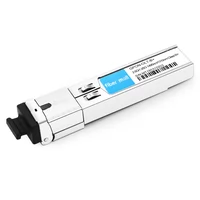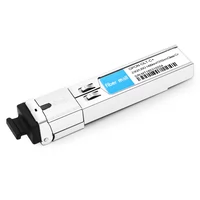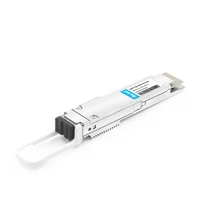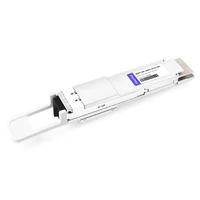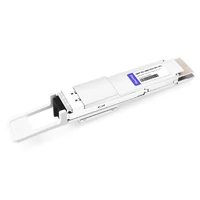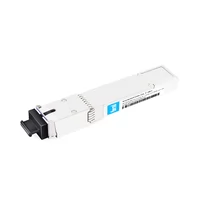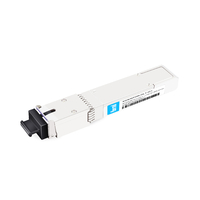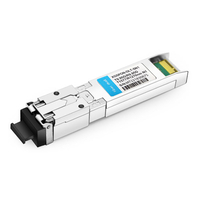In the field of telecommunications, which is changing fast, optical transceiver modules are essential for high-speed data transmission. This manual gives a detailed review of Nokia® transceivers by exploring their design, use in modern networking environments, and how they work. The article also covers different kinds of optic transceivers, their specifications, and operational principles, among other things readers need to know about them, such as compatibility considerations. It seeks to enlighten people more about these units so that they can improve the performance, reliability, and scalability of networks. This complete guide is meant for anyone who wants to understand better or work with optical transmission technology, whether or not you have experience in this area.
Table of Contents
ToggleWhat is a Nokia® Transceiver and How Does it Work?
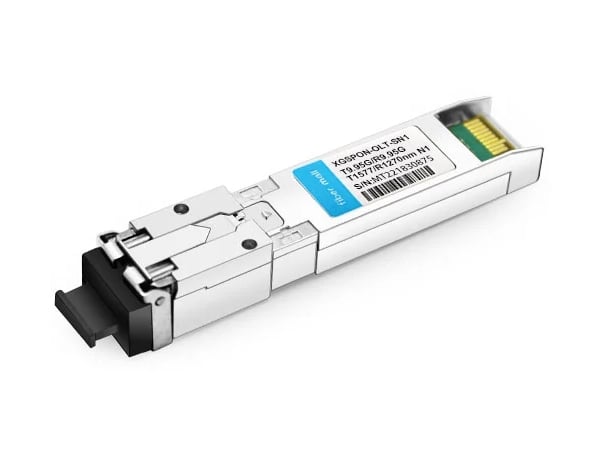
Overview of Nokia Transceivers
Nokia transceivers are advanced optical communication devices that support sending and receiving data across different networks. These transceivers comprise a transmitter and receiver in one module, allowing for a bidirectional flow of information. In this method of transmission, signals are carried by light, which gives it much more extraordinary bandwidth abilities than traditional electric means can offer. Nokia transceivers support several optical standards, such as SFP, SFP+, and QSFP+, among others, thus ensuring compatibility with various network devices. They can be used in metropolitan area networks (MANs) and long-haul communication links, hence providing efficient solutions for data center interconnects and long-distance telecommunications. Nokia transceivers apply cutting-edge technologies, helping optimize network performance, decrease latency, and increase overall data integrity within current networking environments.
Key Features of Nokia Optical Transceiver Modules
Nokia optical transceiver modules are designed such as the LC SMF optical transceiver module have several characteristics that improve their functionality and adaptability in different networking environments:
- Fast Data Rates: These modules help support high-speed data transfers that frequently exceed 100 Gbps, making them perfect for applications with high bandwidth requirements.
- Compatibility: Nokia transceivers work well with many other types of network hardware since they conform to various industry standards, such as SFP, SFP+, QSFP+, etc., ensuring that different vendors’ equipment can interoperate without any problems.
- Flexibility: Modules come in different forms and wavelengths so that they may be used over short distances and long hauls, whether for data centers, telecoms, or enterprise networks.
- Hot Swappable: Many of these systems can be replaced while the whole system is still running, reducing downtime and improving operational efficiency.
- Spectrum Efficiency: Nokia modules use existing fibers by employing wavelength division multiplexing (WDM), among other advanced technologies; this means they improve capacity without requiring additional infrastructure investments.
- More Reliable Than Ever Before: They have built-in diagnostic features, such as digital diagnostic monitoring (DDM), which gives real-time information about how well a module is performing. This allows maintenance to be done earlier, thus lowering the chances of network failures.
These features ensure optical networking solutions’ trustworthiness, productivity, and scalability, further strengthening Nokia’s position as a top player in optical transmission technology.
How Nokia Transceivers Compare to Other Brands
Among the many optical network providers, Nokia transceivers are unique because they have many features and work better than others. This brand usually gives faster data transmission rates and wider compatibility with different networking standards, enabling integration in various setups. Thanks to their universal design, they can work for short-range links or long-distance transmissions, which fits all these applications. Moreover, most Nokia modules are hot-swappable; hence, this dramatically reduces operational downtime, especially where businesses cannot afford any interruptions in service provision due to their critical nature of operation. Another advantage is that such types of transceivers save resources since higher spectrum efficiency is achieved through technologies like wavelength division multiplexing, while reliable devices always deliver consistent results and improve proactive maintenance abilities. Although it might seem like competitors have similar offerings, Nokia remains unbeaten in innovation coupled with superior quality, thus making it a leader within this industry segment – the optic transmission market.
How do you choose the suitable Nokia-compatible transceiver for your needs?
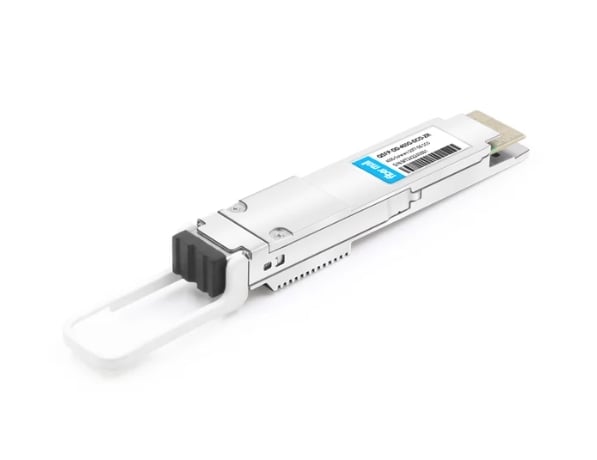
Factors to Consider When Selecting an Optical Transceiver Module
To ensure the best performance and compatibility within your networking infrastructure, some critical points must be considered when choosing an optical transceiver module.
- Rate of Data: One needs to choose a transceiver with the capacity for required data transmission rates for their applications. There are common standards between 100Mbps and 400Gbps, where if you exceed the necessary bandwidth, your network might be future-proofed by selecting modules.
- Distance and Reach: The distance a transceiver can cover depends on its optical specifications, i.e., whether it uses single-mode or multi-mode fibers, among other factors. Modules have different optimizations for various reach capacities, e.g., short-range (up to 300m) or long-haul (over 100km).
- Wavelength: Performance and coverage, especially over 100m, are directly affected by the wavelength of light used during transmission, such as 1310nm. Typical wavelengths on multi-mode fibers are around 850 nm, while on single-mode fibers, they range from 1310 nm or 1550 nm. It is, therefore, important to match fiber type with transceivers’ wavelength to achieve maximum efficiency.
- Form Factor: Transceivers have different form factors, such as SFP, SFP+, QSFP, etc.; hence, one should consider this based on what already exists within their hardware setup to ensure correct fitment into designated ports and consider space limitations.
- Compatibility: Third-party transceivers must be checked against compatibility with existing hardware because some networking equipment may be vendor-specific. This may limit the usage of non-certified modules, which could lead to poor performance and support issues.
- Power Consumption: The power consumed by these modules can contribute to cost savings measures, environmental friendliness, and lower power consumption ratings. This supports sustainability goals and reduces heat dissipation, improving overall system reliability due to reduced failure rates caused by overheating problems.
- Environmental Conditions: It is essential to know the environment under which a transceiver will operate; for instance, temperature variations or exposure to dust particles may shorten life spans and impact reliability. Hence, such factors need to be considered during the selection process.
In conclusion, network professionals should critically analyze these considerations when selecting optical transceivers that best fit their technical specifications and operational needs, thereby ensuring the adequate performance of networks with high availability levels.
Understanding SFP and SFP+ Modules
SFP (small form-factor pluggable) is a well-known concept in compliant networking applications. SFP+ is an abbreviation for compact, hot-swappable I/O transceiver modules used in telecommunications and data communications applications. The only difference between SFP and SFP+ lies in their data rates: SFP typically operates at 1 Gbps, while SFP+ supports speeds of up to 10 Gbps, making it a viable choice for networks that require more bandwidth.
These two module types are designed to fit into the same interface (SFP), which makes network design flexible. Also, you can often plug an SFP+ module into an existing port with an SFP connector so it can be integrated without any problems while upgrading systems. They support various interfaces like Ethernet, Fiber Channel, or SONET; therefore, they can also be used across different types of network architectures. When choosing compatible transceivers, the fiber type should be considered, along with the distance requirements and network protocols used, because this will ensure the best performance possible for a particular application environment.
Comparing Different Form Factors: SFP, XFP, QSFP28
When evaluating optical transceiver modules, it is important to compare the different form factors of SFP, XFP, and QSFP28.
- Small Form-factor Pluggable (SFP) is designed for high-speed data networking and supports up to 1 Gbps data rates for SFP and 10 Gbps for SFP+. Due to its small size and hot-swappable feature, it can be used in many applications, such as telecommunications and data centers.
- XFP (10 Gigabit Small Form-factor Pluggable) was developed mainly for use in high-performance networks where connections of 10 gigabits per second are required. Its larger form factor provides more room for thermal management, resulting in increased bandwidth capabilities. XFP has been replaced by SFP+ in most cases, but there are still some scenarios that need 10Gbps with better thermal control, like the one with 1310nm 10km DOM duplex LC.
- Quad Small Form-factor Pluggable 28 (QSFP28) is an advanced type that can achieve data rates up to 100 Gbps using four channels, each operating at 25 Gbps. This design suits well modern data center architectures with limited space but demanding high bandwidths. QSFP28 transceivers are compatible not only with previous QSFP standards but also support various applications such as Ethernet or Fibre Channel, making them very versatile for multi-speed networks.
In sum, when choosing between SFPs, XFPs, or QSFP28s, one should consider specific bandwidth requirements, distance considerations, and overall network architecture for better performance and flexibility.
Installation and Configuration of Nokia Transceivers
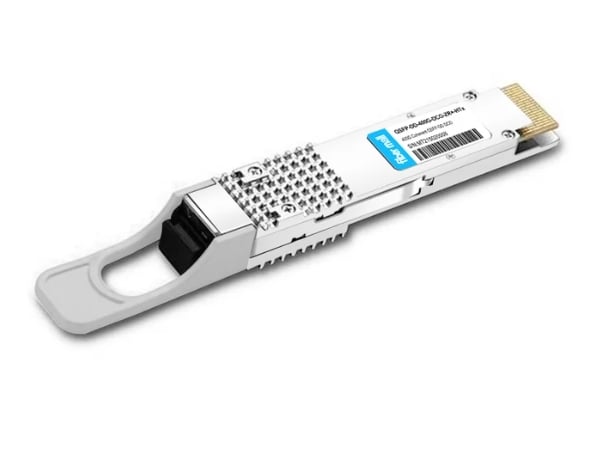
Step-by-Step Guide to Installing Nokia Transceiver Modules
- Preparation: Ensure you have the correct Nokia transceiver module for your hardware. Check the installation manual for your equipment.
- Power Down Equipment: Turn off the network device where the transceiver will be installed to ensure safety and prevent data loss.
- Locate the hot-swappable transceiver slot: Find out which slot on your device is designed for a hot-swappable transceiver module. The slots are usually labeled, and it’s important that you insert the module in the right place for it to work.
- Insert Transceiver: Carefully remove the transceiver from its packet. Place it into the slot, ensuring that the connectors face the right direction. Push gently until the 10G SFP module clicks, indicating that it’s firmly seated.
- Connect cables to breakout configuration for best performance: After installation, Choose appropriate fiber or copper cables and connect them with this module, making sure the connector seats well so as not to lose signals.
- Power On Equipment: Switch on networking equipment once everything has been fixed correctly. Watch the boot sequence to see if the system can recognize this new part.
- Configuration: You need to configure your device’s management interface to set up new transceiver settings, but before that, verify connectivity by setting network parameters correctly to check if these devices are compliant.
- Testing: Finally, test whether or not installed transceivers work properly by monitoring errors during connectivity. This will tell us whether our installations were successful.
By following these steps, one can easily install Nokia transceiver modules, which will enhance their networks’ performance and ensure compatibility with existing infrastructure.
Configuring Your Nokia® Transceiver for Optimal Performance
Once you have installed your Nokia® transceiver, follow these steps to make sure it performs at its best:
- Check Software Compatibility: Ensure your device’s firmware is current and supports the particular transceiver model. This may mean going to the manufacturer’s website and checking for software updates.
- Configure Network Parameters: Use the device management interface to enter network settings such as IP address, subnet mask, and VLAN (if required) so that they can communicate correctly over the network, especially when using the smf optical transceiver module.
- Monitor Link Status: Monitor the link status of the transceiver by utilizing diagnostic tools found in the management interface. Signal strength, among other things, can be handy indicators for error rates, giving insight about how well or poorly modules perform.
- Adjust power settings to ensure compatibility with your compliant transceiver.: Optimize signal quality by adjusting the optical power settings of transceivers depending on the application and distance requirements; this will help avoid issues related to attenuation or too much signal strength.
- Enable Diagnostic Features: Turn on digital optical monitoring (DOM) features available within a given system where these modules are used. With this enabled, real-time monitoring is allowed for key parameters like temperature, voltage, and transmit/receive power levels, thereby aiding proactive maintenance.
- Perform Regular Testing: Conduct tests periodically across networks, evaluating performance over time while troubleshooting any arising problems. Consistent operations should always be guaranteed, hence the use of ping tests, throughput tests, and error monitoring, among other tools, during such an exercise.
By diligently following these configuration practices, you can ensure that your Nokia® transceiver is performing optimally within your network infrastructure.
Common Issues and Troubleshooting Tips
Many common issues can affect network performance when working with transceivers. Here’s how to troubleshoot them:
- Signal loss: If the transceiver doesn’t connect, check its physical connections first and make sure optical cables are properly seated. Also, verify if there are any damaged parts, such as wires or connectors, that could cause signal attenuation.
- Performance inconsistency: Data transmission rate fluctuations usually result from network congestion or misconfiguration; thus, it is necessary to review VLAN settings and ensure that correct network parameters were set up during initial installation according to the manufacturer’s guidelines.
- Error rates: Frequently appearing errors shown by diagnostic tests may indicate hardware failure due to incompatibility between devices within a network. To this end, one should compare supported standards and protocols by connected equipment, including modules themselves, against each other; then, if necessary, perform a full self-test on the module under consideration.
Addressing these problems one after another while employing relevant problem-solving techniques will greatly improve reliability and efficiency in operation using transceivers.
The Benefits of Using Nokia Optical Transceivers
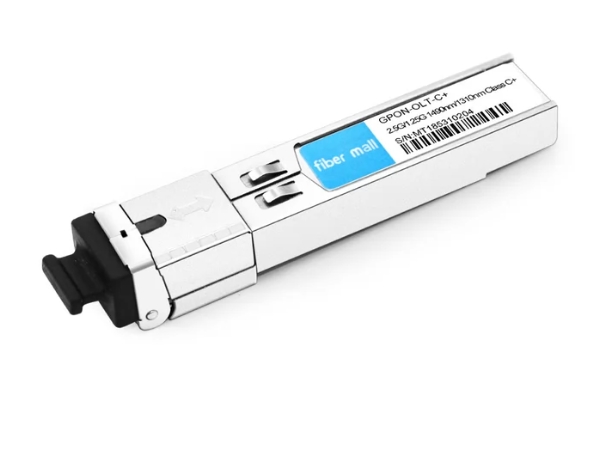
Enhanced Network Performance with Nokia Transceivers
To better the performance of a network, Nokia optical transceivers come with some benefits. They ensure higher reliability and signal integrity over long distances through advanced technologies such as digital diagnostics monitoring (DDM) and error correction mechanisms. These transceivers can support high data rates, facilitating the smooth transmission of vast amounts of data, especially in high demand for data centers and enterprise networks. Compatibility is another feature built into Nokia transceivers, making them easy to integrate with different network devices following SFP, SFP+, or QSFP+ industry standards, among others. This flexibility simplifies deployment and future-proofs network infrastructure for scalability when performance demands increase. What happens when you use Nokia optical transceivers is increased throughput, lower latency, and stronger networking experience altogether.
Compatibility and Compliance with Industry Standards
Nokia optical converters are designed in such a way that they meet or even exceed the required industry standards, which ensures interoperability and compliance within different networks. These products are compatible with SFP, SFP+, QSFP, and QSFP-DD, among other things, which means they can work with hardware from various vendors. What this means is that service providers can use them together with already existing systems without having to make any changes or come up with proprietary solutions. Besides being reliable due to intensive testing and certification procedures, these converters also fit into any legacy system and modern ones seamlessly. Nokia transceivers follow worldwide protocols, thus allowing for scalable future-ready networking, thereby enabling enterprises to keep pace with changing technology needs while reducing compatibility issues at the same time.
Durability and Reliability of Nokia Transceiver Modules
Nokia modules for transceivers are created with the idea of durability and dependability in mind because this is important for maintaining a smooth network performance in different operational environments. Such modules are made to be strong enough to withstand harsh conditions, which means that they often go through hard tests, including extremes of temperature, humidity, and vibration; both indoor and outdoor robustness should work well for them. In addition to this, Nokia uses advanced manufacturing techniques involving quality assurance measures against failure risks, thus increasing the life span of these transceivers. Nokia’s transceiver modules have gained trust worldwide due to their ability to provide uninterrupted service and reduce the total cost of ownership. Therefore, businesses can enjoy less downtime and improved network resilience.
What are the different types of Nokia Transceivers that are available?
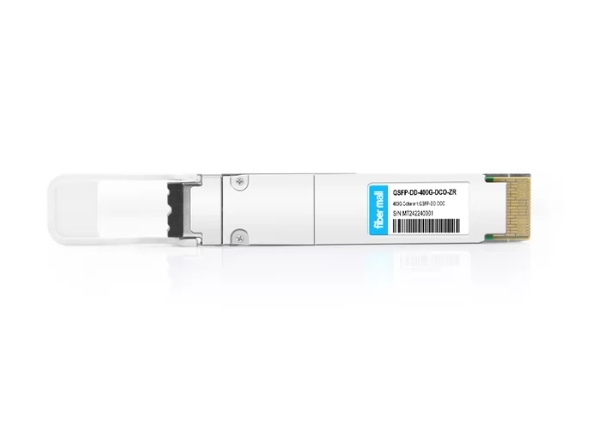
Overview of 10G, 40G, and 100G Nokia Transceivers
Nokia’s various transceivers are created to satisfy different bandwidth requirements in new networks.
- 10G Transceivers: Nokia’s 10G transceivers are mainly used for access and aggregation networks, which give service providers and enterprises a greater return on investment. They support several protocols, including Ethernet and SONET/SDH, among others, so they can be applied in many ways.
- 40G Transceivers: Nokia’s 40G transceiver modules have been designed for high-capacity data center interconnects and core networks. They provide higher bandwidth with lower latency to address the increasing need for data throughput while maintaining backward compatibility with existing infrastructure.
- 100G Transceivers: Nokia’s 100G transceiver solutions are intended for next-generation cloud computing or data centers within network architectures. To realize this, such a transceiver employs coherent optics and dense wavelength division multiplexing (DWDM) technologies that enable the highest capacity over long distances, thus ensuring reliable operation in high-bandwidth applications where they are needed most.
Nokia has developed its 10Gbps, 40Gbps, and even higher-speed optical devices, such as those operating at 100 gigabits per second (100 Gbps), in response to the growing need for scalable and efficient network systems that can adapt alongside an organization while still working within preexisting frameworks.
Understanding LC SMF and MMF Optical Modules
Small in size and high in density, Lucent connectors are widely used in networks. They can support Single-Mode Fiber (SMF) and Multi-Mode Fiber (MMF), which means they can be deployed in different settings.
- Single-Mode Fiber (SMF): These modules transmit light directly down the fiber with minimal dispersion so that it can travel further before it needs to be regenerated. Typically, SMF can go up to 80 kilometers or more without significantly losing signal strength. This type of fiber is commonly used for long-haul communication systems and modern telecommunication networks.
- Multi-Mode Fiber (MMF): Conversely, MMF modules have a larger core diameter than single-mode fibers, allowing multiple light modes to propagate simultaneously. In this case, transmission distance is shorter—usually about 100 meters to 400 meters, depending on specific configurations and types of MMFs employed—though bandwidths are much higher. It is most often found in data centers, short-range communications links, and LANs where high amounts of information need to flow quickly over relatively short distances.
The LC connector for SMFs and MMFs helps optimize network performance while ensuring flexibility and compatibility with different networking standards. The industry tests these modules against their specifications so that they reliably transmit signals even under diverse conditions.
Special Features: Direct Attach and Active Optical Cables
Direct-attach copper (DAC) cables and Active Optical Cables (AOC) are very important in today’s networks as they are known to deliver the best results for specific tasks.
- Direct Attach Copper (DAC): This type of copper cabling has connectors on both ends and is designed for short-range connections that do not exceed 7 meters. DAC cables provide a cheap solution for interconnecting data centers with high bandwidth needs. They consume less power and offer low latency, making them ideal for connecting switches to servers or storage devices where space and budget are limited but data should be transferred fast enough.
- Active Optical Cables (AOC): AOC technology uses optical fibers housed within a cable containing active electronics at either end. AOCs, unlike passive copper cables, can allow communication over longer distances than what DACs can achieve, typically between 10m and over 100m. These cables support multiple protocols and high data rates; hence, they can be used where there is a need for a large amount of data to pass through, such as in 10G, 40G, or even 100G Ethernet connections utilizing CWDM technology. They also perform better than other types under electromagnetic interference environments since their reliability during transmission is higher, too.
Both DAC and AOC solutions improve network efficiency and enhance performance, allowing for the flexibility of different speeds, distances, and application requirements.
Reference Sources
Frequently Asked Questions (FAQs)
Q: What are Nokia® Transceivers?
A: Nokia® transceiver is a module used in fiber optic networks for data transmission. They are designed to support various applications and distances using Alcatel-Lucent’s technology.
Q: What types of Nokia® transceivers are available?
A: Nokia provides various transceivers, including 1310nm, 850nm, 10km dom duplex lc smf optical transceiver, and 40km versions, which can accommodate multiple data rates and distance requirements.
Q: How do I choose the suitable Nokia® transceiver for my network?
A: Some factors you may want to consider when selecting a suitable transceiver for your network may include distance (e.g., 10km or 20km), wavelength (e.g., 1310nm or 850nm), data rate, compliance standards (e.g., MSA, taa), etc. It should meet all your network needs and be compatible with other hardware components that you already have.
Q: What is an SFP transceiver, and how does it differ from an SFP+?
A: The main difference between these two lies in their speed capabilities. SFP can support up to 4.25 Gbps, while its counterpart handles up to but does not exceed 10 Gbps, thus having higher data rates. These devices find uses within fiber optic networks but with varying performance requirements.
Q: Are Nokia® transceivers hot-swappable?
A: Yes, most Nokia transceivers, like the Nokia 3he09327aa compatible 10gbase-lr sfp, are hot-swappable, i.e., they can be inserted or removed without causing any interruptions in operation on a live system.
Q: What are the features of the optical transceiver 10km dom duplex lc SMF?
A: This supports a distance range of up to 10 kilometers with a wavelength of 1310nm and LC duplex connectors. It has high data rate capabilities and Digital Diagnostic Monitoring (DOM), which ensure its reliability.
Q: What are direct attach cables and how are they used with Nokia® transceivers?
A: Direct attach cables, also known as DACs, connect networking equipment directly without using separate transceivers in many cases. They are often employed for short-distance, high-speed connections alongside Nokia® transceivers.
Q: How do I ensure compatibility with Alcatel-Lucent Nokia® devices?
A: Verify if the transceiver meets the MSA or TAA standards. Such products like alcatel-lucent nokia® sfp-gig-t compatible taa would seamlessly work with Alcatel-Lucent Nokia® equipment.
Q: What is the typical optical budget for a Nokia® 10km transceiver?
A: The typical optical budget of a Nokia® 10km transceiver is designed while considering efficient signal transmission over single-mode fibers (SMF), which includes fiber loss and connector attenuation.
Q: What role does DOM (Digital Diagnostic Monitoring) play in Nokia® transceivers?
A: DOM enables monitoring parameters such as temperature, voltage, and optical power levels, among others, in real-time, thus achieving optimum operation, especially for OLT setups for troubleshooting Nokia devices.
Related Products:
-
 NOKIA 3FE53441ACAA Compatible GPON OLT SFP TX-2.5G/RX-1.25G TX-1490nm/RX-1310nm Class B+ 20km SC SMF DDM Transceiver Modules
$30.00
NOKIA 3FE53441ACAA Compatible GPON OLT SFP TX-2.5G/RX-1.25G TX-1490nm/RX-1310nm Class B+ 20km SC SMF DDM Transceiver Modules
$30.00
-
 NOKIA 3FE53441BAAA Compatible GPON OLT SFP TX-2.5G/RX-1.25G TX-1490nm/RX-1310nm Class C+ 20km SC SMF DDM Transceiver Modules
$35.00
NOKIA 3FE53441BAAA Compatible GPON OLT SFP TX-2.5G/RX-1.25G TX-1490nm/RX-1310nm Class C+ 20km SC SMF DDM Transceiver Modules
$35.00
-
 Nokia 3HE16564AA Compatible 400G Coherent QSFP-DD DCO C-band Tunable Optical Transceiver Module
$6000.00
Nokia 3HE16564AA Compatible 400G Coherent QSFP-DD DCO C-band Tunable Optical Transceiver Module
$6000.00
-
 Nokia 3HE16565AA Compatible 400G Coherent QSFP-DD DCO C-band Tunable Optical Transceiver Module
$6500.00
Nokia 3HE16565AA Compatible 400G Coherent QSFP-DD DCO C-band Tunable Optical Transceiver Module
$6500.00
-
 Nokia 3HE18360AA Compatible 400G Coherent High TX Power QSFP-DD DCO OpenZR+ C-band Tunable Optical Transceiver Module
$7000.00
Nokia 3HE18360AA Compatible 400G Coherent High TX Power QSFP-DD DCO OpenZR+ C-band Tunable Optical Transceiver Module
$7000.00
-
 NOKIA 3FE47581AD Compatible XGSPON GPON Combo B+ I-temp OLT MPM SFP-DD TX-9.95G/RX-9.95G Tx-1577nm/Rx-1270nm SC DDM -40°C~85°C Optical Transceivers
$315.00
NOKIA 3FE47581AD Compatible XGSPON GPON Combo B+ I-temp OLT MPM SFP-DD TX-9.95G/RX-9.95G Tx-1577nm/Rx-1270nm SC DDM -40°C~85°C Optical Transceivers
$315.00
-
 NOKIA 3FE47581BD Compatible XGSPON GPON Combo C+ I-temp OLT MPM SFP-DD TX-9.95G/RX-9.95G Tx-1577nm/Rx-1270nm SC DDM -40°C~85°C Optical Transceivers
$330.00
NOKIA 3FE47581BD Compatible XGSPON GPON Combo C+ I-temp OLT MPM SFP-DD TX-9.95G/RX-9.95G Tx-1577nm/Rx-1270nm SC DDM -40°C~85°C Optical Transceivers
$330.00
-
 Nokia 3FE47548AA Compatible 10G SFP+ TX-9.95G/RX-9.95G, 2.488G Tx-1577nm/Rx-1270nm SN1 SC UPC DDM Optical Transceivers
$300.00
Nokia 3FE47548AA Compatible 10G SFP+ TX-9.95G/RX-9.95G, 2.488G Tx-1577nm/Rx-1270nm SN1 SC UPC DDM Optical Transceivers
$300.00

